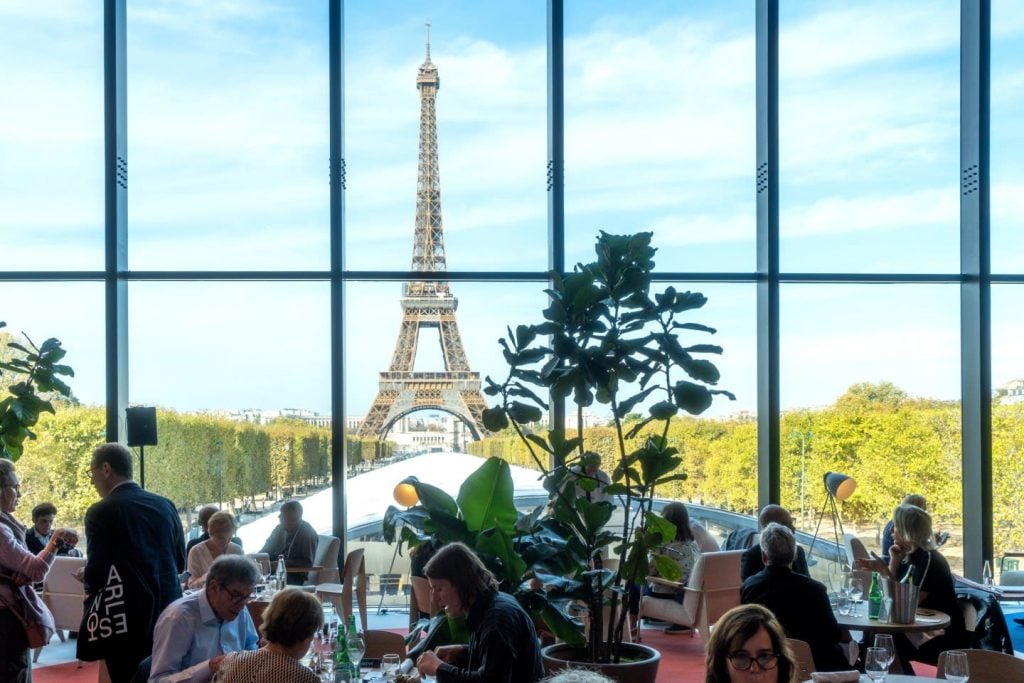Market
The French Art Market Heaves a Sigh of Relief as Lobbying Efforts Look to Beat Back a Proposed Tax Hike
An amendment walking back the increase is slated to be reviewed in parliament in the coming week.

An amendment walking back the increase is slated to be reviewed in parliament in the coming week.

Devorah Lauter

As the art world gathers in Paris for the second edition of Paris + by Art Basel this week, French lawmakers will begin examining the 2024 budget, including an amendment to protect the country’s advantageous sales tax on art, bringing it to a flat, 5.5 percent for all transactions. If adopted in the coming weeks, the hard-fought provision would spell a sigh of relief for the local arts sector.
French art professionals were alarmed to learn earlier this year that a new, E.U.-wide rule threatened to raise the existing 5.5 percent tax on many art sales, including imports, up to 20 percent, dealing a blow to the country’s steadily growing market.
Higher art prices, “would have put the brakes on a dynamic French art market, which is experiencing a renaissance after having lagged far behind the U.S. and the U.K. for decades,” said Guillaume Piens, director of the regional Art Paris fair.
Since Brexit, France has become the largest fine arts seller in the E.U., representing 54 percent of sales, according to a report by Clare McAndrews, who runs Arts Economics. Foreign galleries also continue to settle in Paris, where inter-E.U. transactions are less costly. Ranked the fourth largest art market in 2022, France now accounts for about a 7 percent share of the global art market, versus about 18 percent for the U.K., and 45 percent for the U.S. Meanwhile, French imports grew an average 15 percent annually between 2013 and 2022, per the same study.
“One of the biggest dents you can put into [an art market] is to raise the import VAT,” McAndrews said in a phone interview. “You need things to be able to flow in and out,” of a central marketplace, she added, noting that higher taxes would divert business to other hubs with fewer restrictions.
Led by France’s Professional Committee of Art Galleries (CPGA), local dealers lobbied the government against this major tax increase, arguing that a 5.5 percent rate for all transactions would generate an additional $40 million to $650 million in tax revenue via jobs and art sales. On the other hand, they showed via the McAndrews report, that a 20 percent tax could lead to losses of between $320 and $610 million in tax income.
Confusingly, the current French system only requires the standard 20 percent sales tax to apply to the profit margin on resold artworks, as part of an existing compromise aimed at shielding artworks from full taxation at regular rates. The inconsistent approach is part of what prompted the E.U directive, which aimed for greater transparency, and required the French system to pick a single tax for all art transactions. Either the lower, 5.5 percent on the price of imported artworks, primary sales, and secondary sales; or maintain the 20 percent tax on profit margins for secondary sales, but extend it onto imported works, and primary sales as well. The latter would effectively do away with any “cultural exception,” or special, 5.5 percent tax on art, which the country currently enjoys. If the lower duty is approved, as most expect, art sellers making secondary market transactions with low profit margins would be slightly penalized.
The newly standardized 5.5 tax “will allow Paris to remain the most attractive European capital for the art market and will favor the effervescence of the French art scene,” Fabienne Colboc, a centrist National Assembly member said. She spent months working to convince colleagues of the benefits of a lower tax, and was optimistic about how parliament would vote. Short of making predictions, she expressed hope that the amendment “will be adopted by a large majority.”
However, while it is likely to pass, there is no guarantee. “There’s a risk that the measure is misunderstood,” despite consensus in the French government, said Gaëlle de Saint-Pierre, a legal expert in charge of the VAT issue for the CPGA. “The art market suffers from the image that it’s a luxury sector, only for the rich, which is not true. That’s why we are showing how it also supports the livelihoods of some 30,000 artists, small galleries and businesses,” she added.
In addition to French artists, the sector directly employs over 62,000 regional art workers, and over 111,000 indirectly. Plus, France’s multibillion-dollar tourism industry largely owes its appeal to the arts.
It’s unclear whether the sales tax issue will be addressed this week, or next, when both the government, and the majority Renaissance (RE) party present the amendment. At any rate, France’s minister of economics, Bruno Le Maire, told French journalists that the government stands firmly behind the proposal for a lower levy. “After several months of consultations, we have decided with [culture minister] Rima Abdul-Malak to opt for the only, truly viable option, which will allow France to remain at the center of the global art market,” he said.
For now, such promises have reassured French art workers.
Following a busy press conference kicking off the high-stakes Paris + by Art Basel fair week, the franchise’s director, Clément Delépine, shared his take on the tax issue via e-mail: “In a highly competitive international art market, anything that can benefit artists, and the local cultural ecosystem can be considered a positive sign,” he said.
More Trending Stories:
Four ‘Excellently Preserved’ Ancient Roman Swords Have Been Found in the Judean Desert